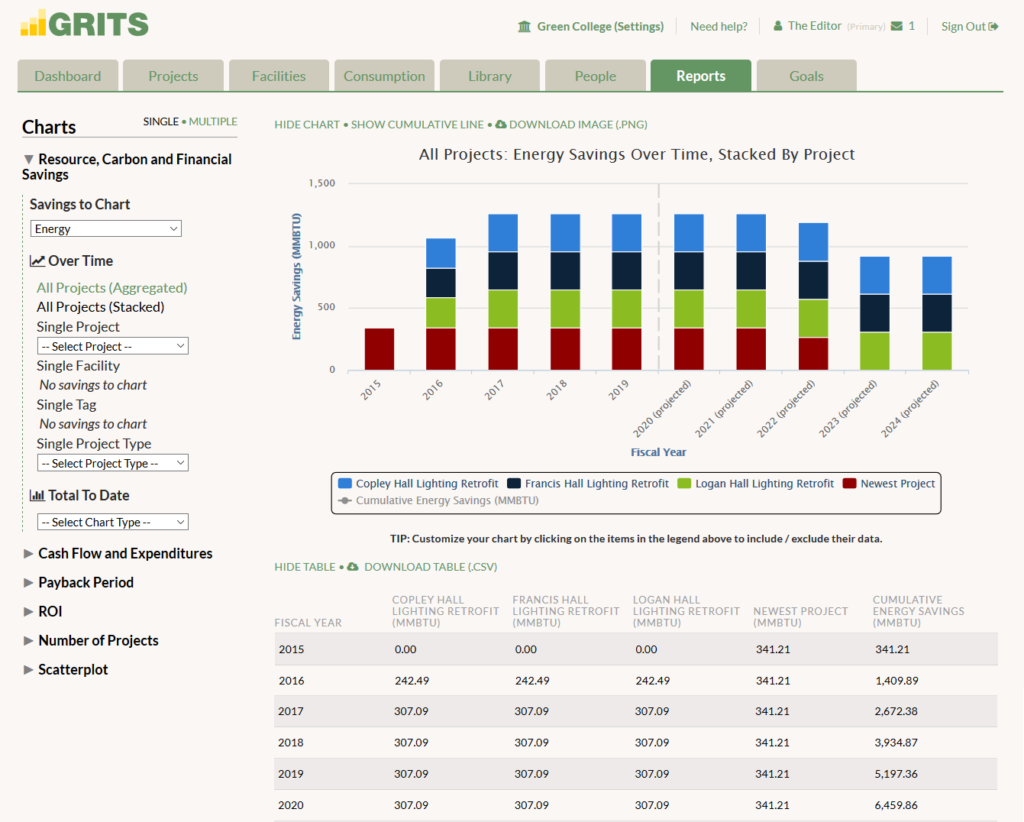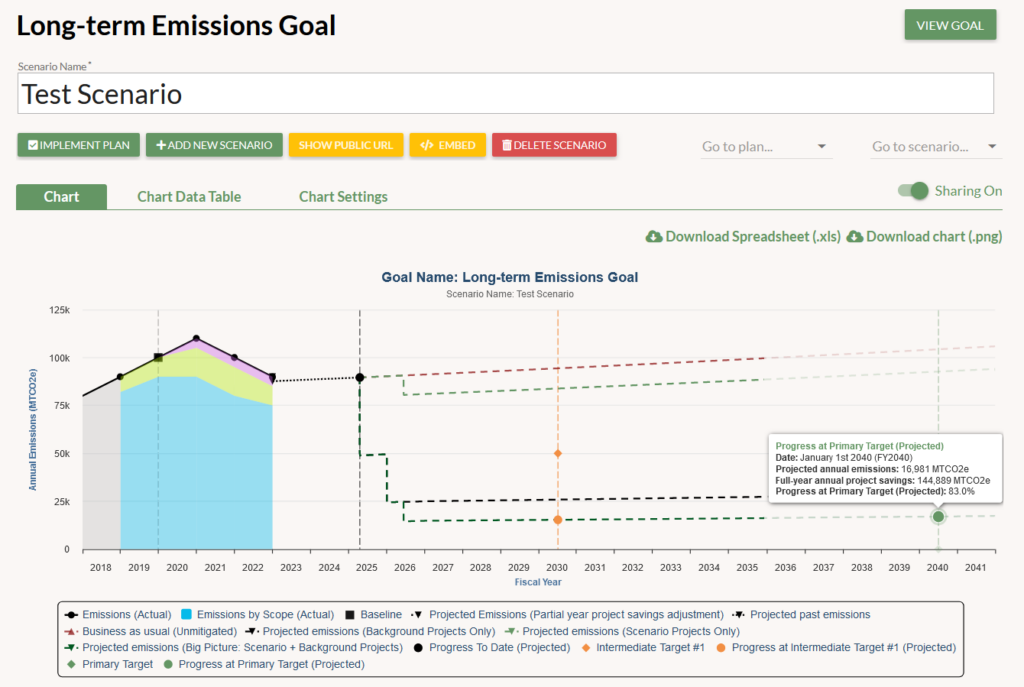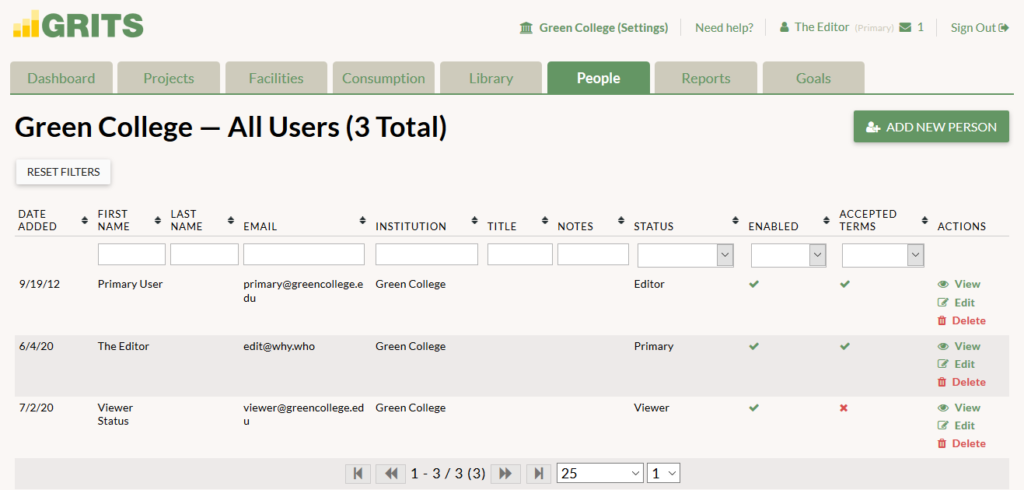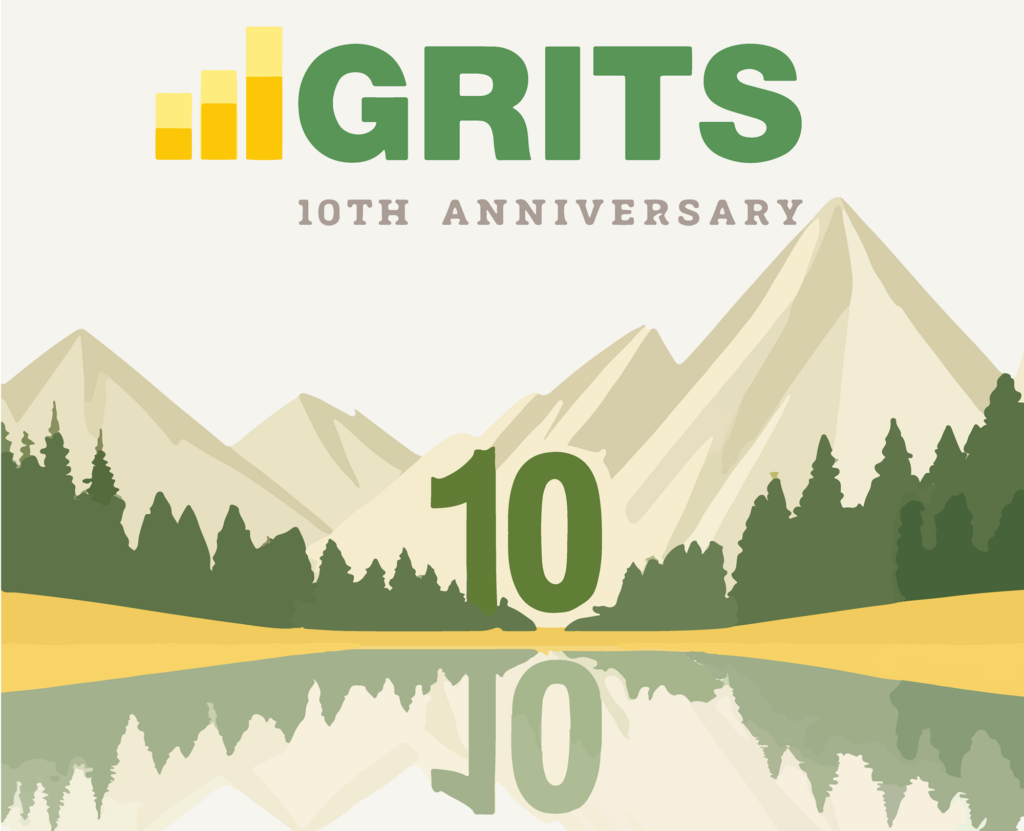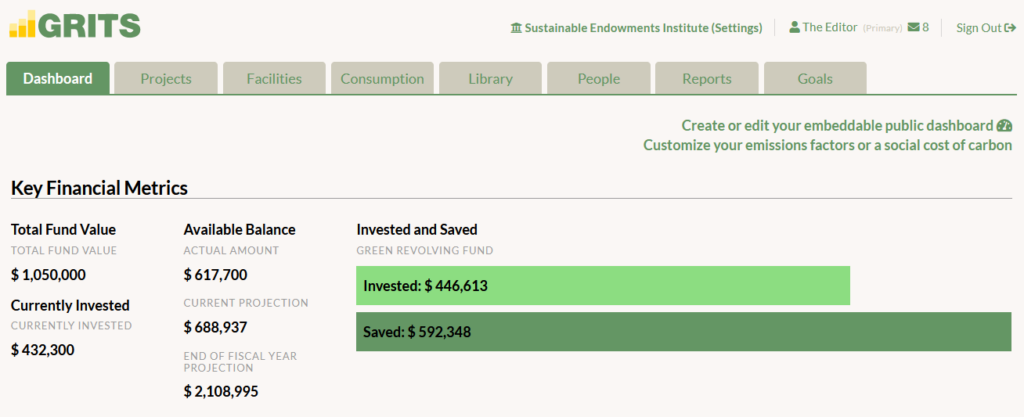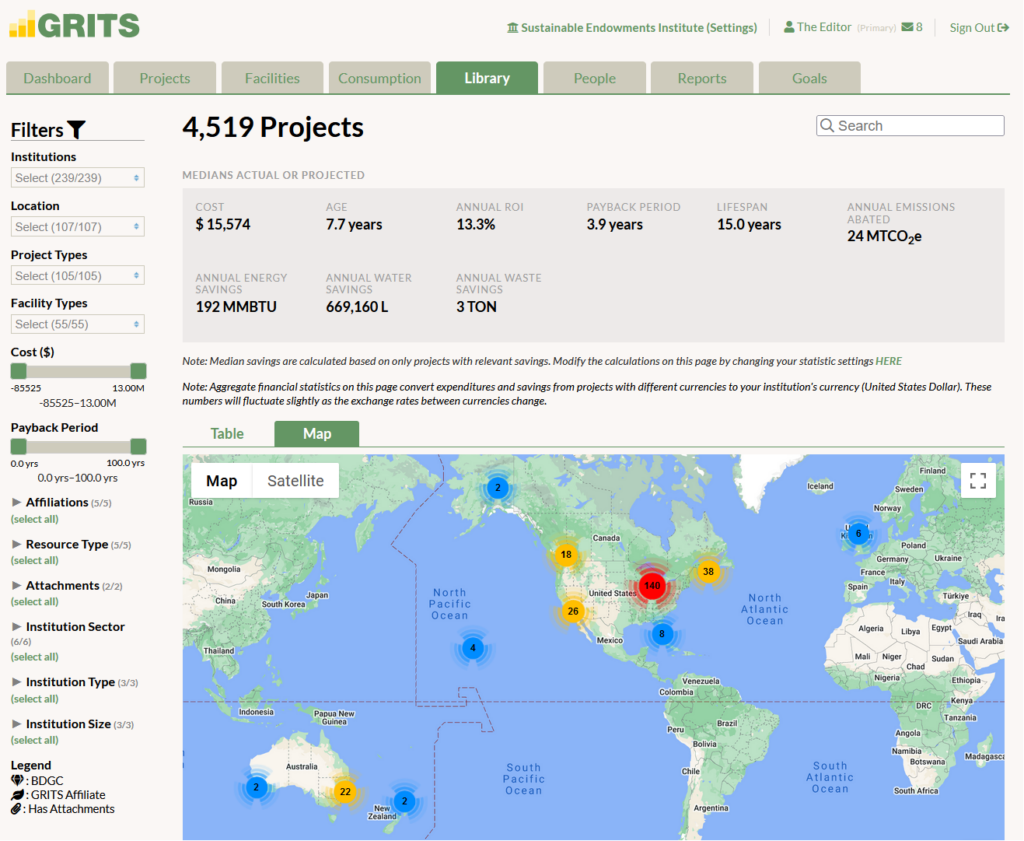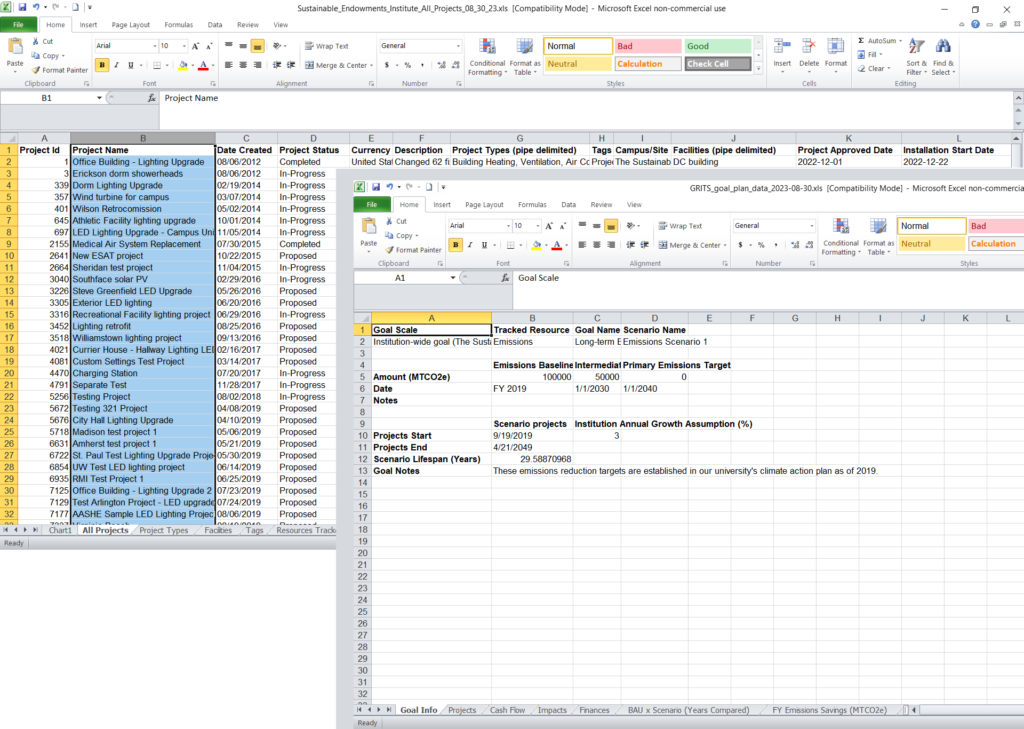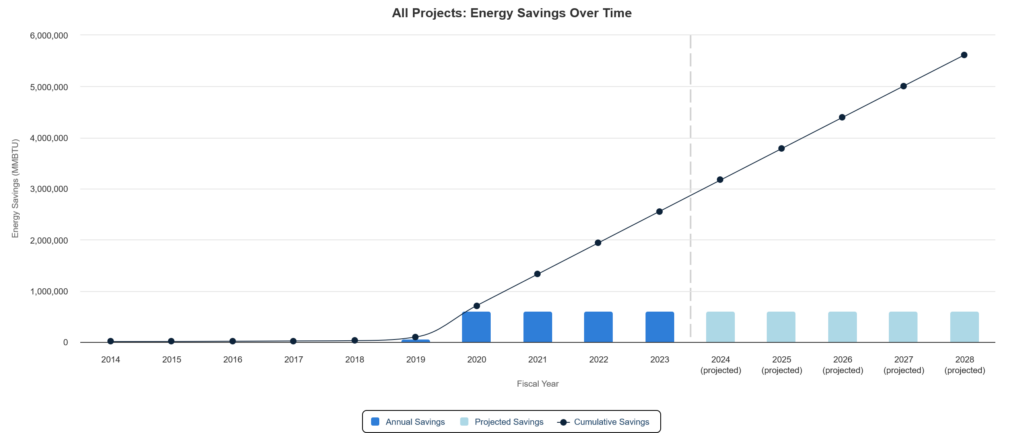Using GRITS to Comply with Building Performance Standards
Growing numbers of cities and states are establishing building performance standards (BPS) that require buildings to reduce their energy consumption or carbon emissions (see many of them on a map here). GRITS can make BPS compliance easier and cheaper, empowering you to plan your own path forward (or to better understand the plans created by a consultant). Once an energy audit has been performed and impactful energy/carbon reduction projects have been identified, these projects can be entered into GRITS so that you can evaluate your options in an easy-to-understand format. You can have consultants use GRITS on your behalf or save the expense and instead create your own plan for BPS compliance–no technical expertise required. See the financial benefits of your projects, not just expenses: While the upfront costs of BPS compliance may draw your attention, GRITS calculates the financial savings associated with your energy efficiency and renewable energy projects along with metrics like annual return on investment and payback period. These metrics provide fuller context and a more balanced view of your project investments. Many of these projects pay for themselves over time, some in just a few years. Learn more. Calculate the costs you’ll avoid through compliance: The social cost of carbon feature allows you to set a price on carbon and use it to estimate the financial benefits of reducing emissions. In the context of a BPS, this price can be the penalty per metric ton of emissions that you will have to pay if your emissions reductions are not sufficient to comply with the standard. GRITS calculates this financial benefit for each of your projects, and you can choose to formally incorporate it into the project’s financial savings alongside reduced energy consumption (see “Carbon Reduction Impact” in the Impact Metrics table in the screenshot above). Easily build actionable BPS compliance plans: GRITS provides a suite of features for planning how you’ll achieve energy or emissions reduction targets. You can create an unlimited number of scenarios in minutes by selecting different combinations of projects and implementation timelines. A centralized cash flow table shows you exactly when you’d make investments in projects and how financial savings would accrue to help offset those costs. Learn more. Report projects and progress to program managers: Once you have entered projects and built energy/carbon reduction plans, GRITS offers several ways of reporting your data to BPS program managers. You can generate PDFs and spreadsheets containing your project data or share links to read-only versions of your compliance plans. Learn more. Customize your emissions factors: If your institution operates in multiple locations or has unique circumstances (e.g., a private power plant owned by a university), you can customize your emissions factors to ensure that the emissions savings attributed to each project are calculated accurately. Try GRITS for free for 14 days to see firsthand how it can support your BPS compliance efforts.
Using GRITS to Comply with Building Performance Standards Read More »


